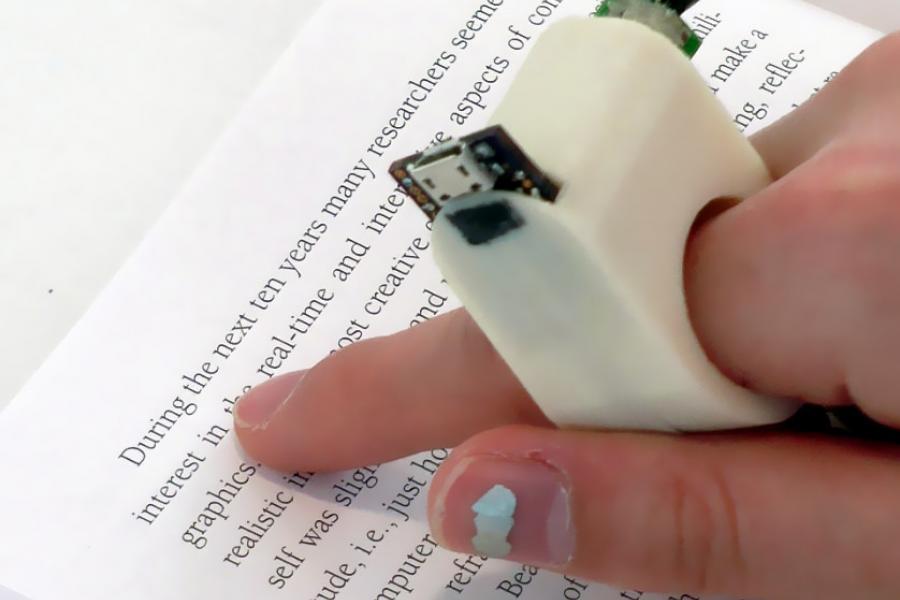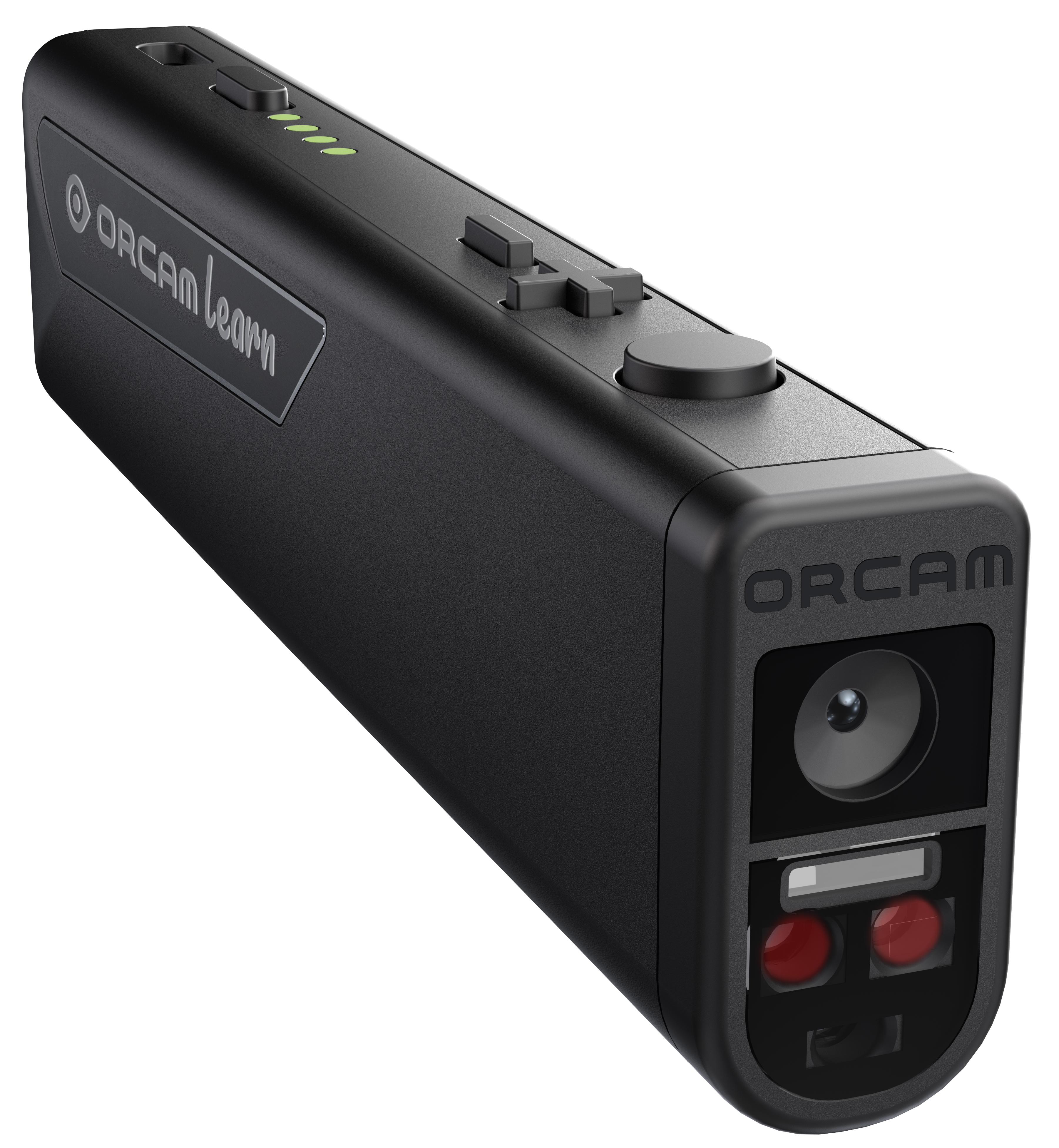Wearable Technology for Low Vision: A Revolution in Accessibility
Wearable Technology for Low Vision: A Revolution in Accessibility
Blog Article
A Guide to Life-altering Assistive Technology for the Blind and Visually Damaged
The improvement of assistive innovation has actually ushered in a transformative age for individuals who are aesthetically damaged or blind, offering tools that enhance freedom and enrich day-to-day experiences. Innovations such as smart navigation tools and AI-driven applications are redefining just how individuals interact with their environments, while accessible analysis services and smart home innovations guarantee to further boost the top quality of life.
Smart Navigating Tools
Smart navigating devices are revolutionizing the way individuals that are blind or aesthetically impaired connect with their atmosphere. These sophisticated technologies, which incorporate general practitioners, audio comments, and haptic signals, supply individuals with vital details about their surroundings, enhancing their independence and wheelchair.
One popular instance is making use of wise walking sticks furnished with sensing units that spot obstacles and offer real-time responses via resonances or audio hints. These devices permit customers to navigate intricate environments, such as busy streets or crowded public areas, with boosted confidence. Furthermore, wearable gadgets, such as wise glasses, are being established to help in identifying faces, reading message, and recognizing objects, even more increasing the customer's spatial awareness.
Additionally, smart navigation tools are significantly integrating expert system to evaluate information and adjust to users' choices. This individualized method not just improves navigation effectiveness yet additionally promotes a feeling of empowerment amongst customers. As innovation remains to advancement, the potential for wise navigating devices to create an extra easily accessible and comprehensive globe for individuals who are blind or visually impaired remains encouraging, inevitably reshaping their daily experiences and communications.
Ingenious Mobile Applications
Mobile applications are arising as effective tools for helping people who are blind or aesthetically damaged, supplying a variety of capabilities that boost daily living. These apps harness progressed modern technology to facilitate everyday tasks, improve ease of access, and promote independence.
One category of ingenious mobile applications concentrates on visual acknowledgment. Applications like Be My Eyes connect customers with sighted volunteers through video telephone calls, making it possible for real-time aid for jobs such as reviewing labels or browsing unknown environments. In a similar way, apps like Seeing AI utilize expert system to describe surroundings, read message, and determine objects, providing users with essential information at their fingertips.
Another substantial location is navigating and orientation. Apps such as Aira and Nearby Explorer provide audio advice, aiding individuals browse urban areas effortlessly. They supply personalized support, enabling a much more certain expedition of the environment.
Moreover, health and wellness and health applications satisfy details demands, such as medicine monitoring and physical fitness monitoring. These applications intend to foster an alternative method to well-being, making certain that customers can keep their health and wellness individually.
Wearable Assistive Instruments
Wearable assistive tools represent a considerable innovation in innovation developed to support individuals that are blind or visually damaged. These gadgets boost wheelchair and independence by giving real-time responses concerning the surrounding environment. Among the most noteworthy wearable innovations are clever glasses furnished important source with sensing units and video cameras, which can identify barriers and relay crucial info through audio hints.

An additional innovative choice consists of wrist-worn devices that make use of ultrasonic waves to find barriers and provide navigational help. These devices frequently feature adjustable setups, permitting users to customize the alerts to their certain requirements.
The integration of artificial knowledge in wearable assistive innovation is additionally significant, as it constantly boosts the precision and responsiveness of these devices. Overall, wearable assistive gadgets are transforming the lives of the aesthetically impaired and blind, fostering greater autonomy and enhancing top quality of life through innovative services.
Easily Accessible Reading Solutions
Obtainable analysis options play a critical role in allowing individuals that are aesthetically impaired or blind to engage with text throughout different layouts. These solutions incorporate a variety of devices and technologies made to boost reading experiences, from traditional print products to digital content.
One popular solution is Optical Personality Recognition (OCR) innovation, which converts printed message into digital style, enabling users to pay attention to or review the web content utilizing display viewers. In addition, specialized e-readers outfitted with view it text-to-speech capabilities offer personalized reading experiences, allowing users to readjust font sizes and background colors for improved presence.
One more effective approach is braille displays, which supply responsive feedback by transforming electronic message into braille. This permits people to review with touch, promoting greater freedom and access to literary works. Furthermore, mobile applications made for checking out scanned papers or books can encourage customers with immediate accessibility to a huge library of materials.

Smart Home Technologies
Smart home innovations have actually revolutionized the way individuals that are visually damaged or blind connect with their living settings, boosting both independence and safety and security. These ingenious remedies utilize automation and connectivity to create an obtainable living area tailored to the needs of customers.
Smart speakers and voice-activated aides give hands-free control over different gadgets, allowing customers to readjust safety, lights, and temperature steps via straightforward voice commands. This capability decreases reliance on sighted support and fosters a feeling of freedom. Furthermore, clever illumination systems can be tailored to supply acoustic comments or responsive signs, allowing individuals to browse their homes extra successfully.
Additionally, safety and security systems geared up with wise electronic cameras and sensing units can send real-time signals to individuals, improving individual security without demanding aesthetic verification. Automated door locks supply satisfaction, permitting customers to safeguard their homes easily.
Integrating smart home modern technologies not only boosts day-to-day living yet additionally encourages social communication with attached tools - AI-powered visual aids. With continuous developments in assistive innovation, the future shows up promising, as even more options will arise to additional equip individuals who are blind or aesthetically impaired, making sure a more independent and inclusive lifestyle
Final Thought
Finally, the improvements in assistive innovation for the aesthetically damaged and blind represent a considerable leap toward boosting freedom and lifestyle. Smart navigation devices, ingenious mobile applications, wearable gadgets, available analysis remedies, and wise home technologies jointly promote an inclusive setting. This assimilation of innovation not just enhances wheelchair and everyday living yet additionally equips individuals to involve fully with their environments, promoting better autonomy and participation in culture.
Developments such as clever navigating tools and AI-driven applications are redefining exactly how customers communicate with their environments, while easily accessible reading options and smart home innovations promise to additional elevate the high quality of life. As technology proceeds to development, the potential for wise navigation tools to develop a more easily accessible and inclusive world for people that are blind or visually damaged remains promising, eventually improving their daily experiences and interactions.
Wearable assistive devices represent a substantial advancement in innovation made to support individuals that are aesthetically damaged or blind. Amongst the most significant wearable technologies are wise glasses equipped with sensing units and video cameras, which can determine challenges and relay essential details with sound hints.
Smart navigation tools, innovative mobile applications, wearable websites gadgets, accessible analysis solutions, and smart home modern technologies jointly foster a comprehensive atmosphere.
Report this page